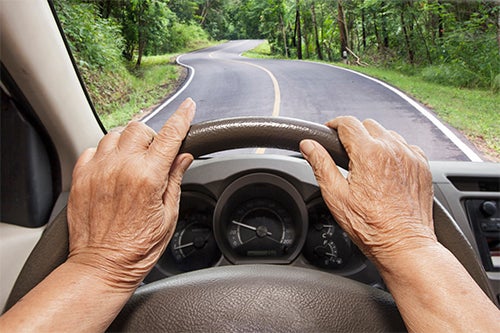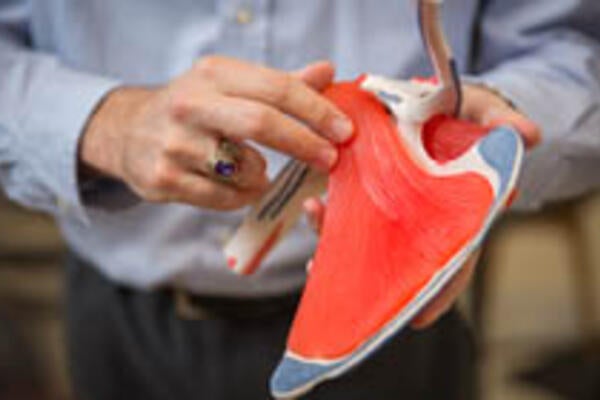
Waterloo research: Parkinson’s disease linked to riskier driving
When it comes to road safety, Parkinson’s disease is a bigger threat than once thought, says Waterloo aging expert

When it comes to road safety, Parkinson’s disease is a bigger threat than once thought, says Waterloo aging expert
By Christine Bezruki Faculty of Applied Health SciencesPeople with Parkinson’s disease drive faster, have slower reaction times on their brakes and struggle to assess dangerous driving conditions, according to University of Waterloo research.
“We found substantial differences in the driving behaviors of those suffering from Parkinson’s disease and healthy drivers, some of which are certainly cause for concern,” says the project’s lead investigator, Alexander Crizzle, a professor in Waterloo’s Faculty of Applied Health Sciences.

Using specialized in-car monitoring instruments, researchers combined two types of electronic data loggers— including one with GPS capabilities— to compare the driving distances, duration, speed, route-choice, and braking patterns of individuals suffering from Parkinson’s disease with those of their healthy peers.
While individuals with Parkinson’s disease drive less overall than healthy populations, the study revealed that they drive significantly more than claimed on surveys or in interviews. They also have a greater tendency to drive in high-risk situations, namely at night, in bad weather or at rush hour, than they report.
“Effective self-regulation depends on being able to recognize one’s deficits and compensate accordingly,” says Crizzle. “Often time drivers with cognitive impairment lack such insight.”
The study also found that people with Parkinson’s disease travel around 30 km/h faster on highways than their healthy peers and show more abrupt braking patterns.
“We aren’t sure why they drive so much faster, but we suspect it is a result of cognitive load. They may not be monitoring speed because of difficulty processing all the other stimuli around them. In a sense, they become fixated on objects on the road- at the expense of their gas pedal.”
Research suggests that at time of diagnosis, more than 20 per cent of Parkinson’s patients already have some degree of cognitive impairment.
“The gap between what Parkinson’s patients report and their actual driving patterns may be due to poorer cognitive scores, or simply the desire to present themselves favorably for fear of losing their license,” says Crizzle.
To date there is no assessment tool or screening battery that predicts fitness-to-drive in those with Parkinson’s disease— something Crizzle hopes his research will help change.
“Many physicians don’t talk to their patients about driving, and those that do may overestimate their capabilities,” he says. “Certainly not all individuals with Parkinson’s are unfit drivers, but if we can reduce crash risk by integrating assessments into the assessment process, everyone will be safer.”

Read more
Special issue of Waterloo Magazine celebrates women who lead, and explores equity in education and the workplace

Read more
Waterloo Magazine, Fall 2014: Smarter cars, high-flying students and better sex for those with bad backs

Read more
Waterloo biomechanics researcher identifies where injury risk is high for automotive assembly line workers
The University of Waterloo acknowledges that much of our work takes place on the traditional territory of the Neutral, Anishinaabeg, and Haudenosaunee peoples. Our main campus is situated on the Haldimand Tract, the land granted to the Six Nations that includes six miles on each side of the Grand River. Our active work toward reconciliation takes place across our campuses through research, learning, teaching, and community building, and is co-ordinated within the Office of Indigenous Relations.